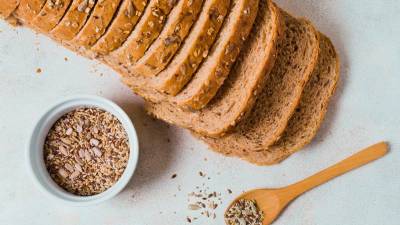Celiac disease is a genetic digestive disorder where the body cannot tolerate gluten, a protein found in grains like wheat, barley, and rye, as well as in lesser-known grains such as oats, triticale, and spelt. Gluten is a protein found in certain grains, and its name comes from the Latin word gluten, meaning “glue.” It gives dough its elastic texture, helping bread rise and form a soft, airy structure. Gluten plays a key role in giving structure to baked goods, so removing it from flour can affect the texture and quality of gluten-free products. As a result, gluten-free foods often have lower volume, a firmer texture, and tend to stale rapidly. They may also lack the unique taste and aroma found in traditional wheat-based products. Because many consumers still expect gluten-free versions to match the look, feel, and flavor of regular bread or cakes, manufacturers often face challenges in meeting these expectations. This makes the quality of gluten-free foods another major hurdle for those trying to stick to a strict gluten-free diet.
While only a few raw foods naturally contain gluten, it is widely used in many processed foods for its functional properties. As a result, people who need to avoid gluten like those with celiac disease must be cautious, as gluten is often hidden in products beyond just bread or pasta.
Celiac disease is a long-term autoimmune condition triggered by specific proteins in gluten such as gliadin (from wheat), hordein (barley), secalin (rye), and avenin (oats). When people with celiac disease eat gluten, their immune system attacks the lining of the small intestine, affecting the tiny finger-like projections called villi. Therefore, it leads to poor nutrient absorption and inflammation. Although gluten intolerance primarily affects the gut, symptoms are systemic and generally include diarrhea, bloating, weight loss, anemia, fatigue, bone pain, and muscle cramps. These symptoms are often grouped as either intestinal (like abdominal pain, constipation, or diarrhea) or extra-intestinal (such as fatigue, joint pain, or anemia). People with celiac disease can manage their symptoms by strictly following a gluten-free diet. However, this is often easier said than done. Finding safe, gluten-free ingredients that also meet daily nutritional needs can be challenging, especially since many common foods contain hidden sources of gluten. As gluten-related health issues become more common, more individuals are turning to a gluten-free diet. This diet is recommended for people with celiac disease, non-celiac gluten sensitivity, and wheat intolerance. For these individuals, avoiding gluten is crucial to managing their symptoms and maintaining overall health.
Non-celiac gluten sensitivity is a condition where individuals experience symptom relief after removing gluten from their diet, even though they do not have celiac disease or a wheat allergy. In non-celiac gluten sensitivity, other components in wheat such as certain proteins (like amylase and trypsin inhibitors) and fermentable monosaccharides, disaccharides, oligosaccharides, and polyols may also trigger symptoms, not just gluten alone.
People with celiac disease must carefully read food labels to ensure the product is truly gluten-free. Completely removing gluten from all food products is difficult, which is why defining a safe threshold for gluten contamination in “gluten-free” foods is so important. Studies have shown that trace amounts of gluten can still be present in gluten-free products due to cross-contamination. To help protect consumers, the Codex Alimentarius Committee has set labeling guidelines requiring disclosure of common allergens, including peanuts, tree nuts, milk, eggs, fish, crustacea/shellfish, soy, and wheat or cereals containing gluten, as well as ingredients derived from them. In addition, the use of “may contain” statements on packaging can be a useful way to alert consumers to the risk of unintentional allergen contamination during food production.
Most prepackaged gluten-free products fall short of their gluten-containing counterparts when it comes to nutritional quality. Unlike refined wheat flours, gluten-free flours are not always enriched or fortified with essential vitamins and minerals. In fact, many gluten-free foods tend to be higher in fat, sugar, or salt depending on the product type. This makes following a gluten-free diet especially challenging for people with celiac disease, as it may lead to deficiencies in important nutrients and an increased intake of saturated fats and carbohydrates. As a result, celiac patients are more prone to conditions like anemia, osteoporosis, and poor growth, especially in children. Studies have also shown that gluten-free diets often lack key nutrients such as fiber, folate, iron, and B vitamins like thiamin, niacin, and riboflavin. If not carefully managed, the diet can lead to imbalances in fat intake and inadequate consumption of essential fatty acids, contributing to long-term health risks.
